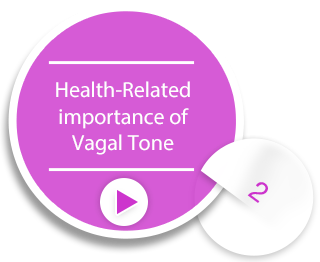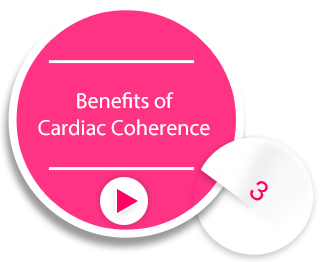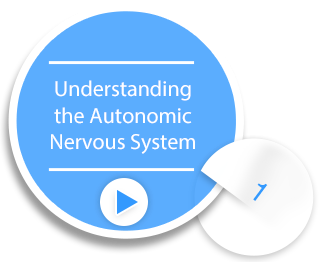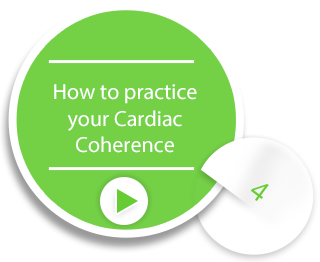
Health-related importance of the vagal tone
Decrease of the parasympathetic tone and pathologies Several scientific studies showed that persons with diabetes, hypertension, asthma or chronic inflammatory or painful diseases as well as cancers presented a dysfunction of the parasympathetic nervous system – materialized by a significant decrease of the parasympathetic tone.
Independently of medical problems, this decrease of the parasympathetic tone was also observed in stressed individuals or persons presenting with chronic anxiety, generalized anxiety, panic attacks or post-traumatic stress.
More recently, clinical studied that centered on emotions unveiled that a high parasympathetic tone promotes a better affective regulation, better social interactions and greater abilities to face stressing agents.
Several triggering mechanisms are involved: reflex regulation phenomena at heart level between the heart rate, respiration and blood pressure as well as neurobiological mechanisms in the brain related to stress and emotions which today are better understood.
How to increase the parasympathetic tone There is a simple and accessible way to act on the parasympathetic tone, i.e. controlled breathing.
Regular practice to control one’s breathing – slow, full and regular breathing – can optimize the reflex system (also called baroreflex or baroreceptor reflex in the medical language) linking together the heart rate, breathing and blood pressure.
At the level of the large vessels (aorta, carotid), we have receptors measuring the blood pressure and which, in case of decrease or increase of the blood pressure, trigger via the autonomic nervous system an acceleration or slowing down of the heart rate.
This a regulating physiological phenomenon that one can optimize by breathing precisely at a frequency of 6 breath cycles per minute (bcm), i.e. a complete inspiration and expiration cycle every 10 seconds. (4.5 seconds of inspiration and 5.5 seconds of expiration).
This slow, regular and guided breathing, around 6 breath cycles per minute, will highlight the breathing-related variations (high frequencies) with variations caused by the baroreflex activity (low frequencies).
This state is called: cardiac coherence.
Several clinical studies showed that breathing at a rhythm of 6 breath cycles per minute could reinforce the vagal tone and thus maximize the flexibility of the autonomic nervous system.

This project have received the support of :

SYMBIOFI brings to the market innovative solutions for managing stress and anxiety through cardiac coherence and relaxation. SYMBIOFI mobilizes advanced technologies which provide novel solutions for psychoeducation of stress and self-help therapy approaches.
SYMBIOFI
Parc Eurasanté
70 rue du docteur Yersin
59120 LOOS
France
Tel : 03 28 55 51 19 contact@symbiofi.com
www.symbiofi.com
Quick links :




